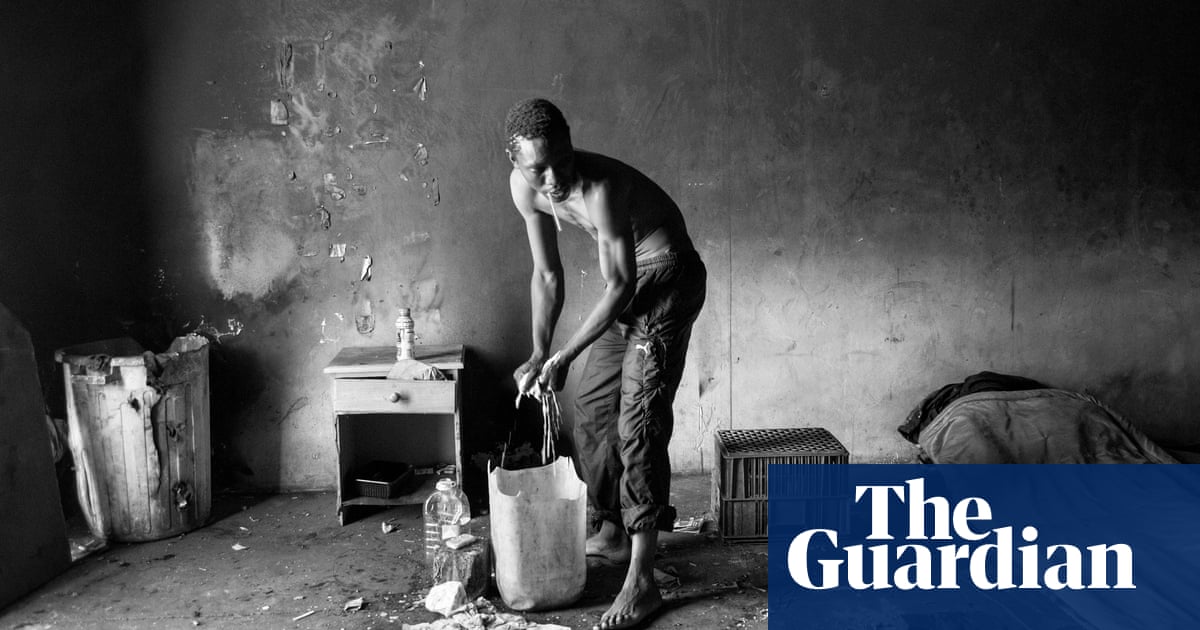Plenty is written about whether recreational drugs should be legal and how we should police their use. But the reasons underlying our use of drugs are less often considered. Why Do We Take Drugs?, a new exhibition season beginning this week at the Sainsbury Centre in Norwich, is devoting six shows to the task of finding a global answer to that question.
The season takes in everything from Amazonian rituals to North American hippydom, Japanese tea ceremonies and British boozing. What it won’t do is moralistically tut or wag its finger. Rather, its aim is to open people’s minds, but with knowledge rather than substances. As the centre’s director, Jago Cooper, explains: “The whole ‘just say no’ approach to drugs, to put them in a box and ignore them, doesn’t work. It’s better to have understanding and make informed choices.”
Why Do We Take Drugs? kicks off with Power Plants, offering a global sweep of stimulants, and Ayahuasca and Art of the Amazon, which focuses on the powerful Amazonian hallucinogen, to explore how context, across cultures, shapes how a drug is used. The Peruvian artist Sara Flores’s absorbing paintings of intricate abstract networks of lines and dots speak to ayahuasca’s age-old use. In Indigenous communities such as Flores’s, the drug is imbibed by select members of a tribe who, with the guidance of a shaman, will seek answers to questions their people face. “The idea is that it allows the person taking it to transcend time, to connect with ancestors and descendants, as well as the Amazon’s wider ecology,” says Cooper. “We’re also looking at what happens when you rip drugs out of those relationships and see them as about individual experiences.”
Now a go-to drug for western soul searchers, ayahuasca’s impact beyond the Amazon is explored through the visual staples of headshops and new ageism, far out poster art and other trippy creations rooted in European realism. These begin with 1960s cult figures such as Robert Venosa, whose rainbow-soaked ayahuasca-inspired fantasies speak to a time when drugs took on a countercultural, anti-establishment dimension.
The second instalment, Heroin Falls, tackles addiction by pairing series by two photographers that, on the surface, appear quite different. Graham MacIndoe trained a cheap digital camera on his own heroin use in his New York apartment to create diaristic self-portraits with a scrappy raw immediacy; the project ultimately formed part of his road to recovery. Lindokuhle Sobekwa, on the other hand, photographed school friends and other young people from Thokoza in South Africa in the grip of the nyaope epidemic, a low-grade heroin mixed with cannabis and often bulked with cleaning chemicals or even rat poison. Sobekwa’s lush black-and-white photography is at odds with MacIndoe’s lo-fi work. Yet, as Cooper points out, “it’s striking how similar the destructive qualities of the drugs are in these removed settings. The dangers are completely cross-cultural.”
The season will conclude with two specially commissioned idiosyncratic approaches to British drug use. Lindsey Mendick, the sculptor known for her no-holds-barred confessional clay works, will be staging Hot Mess, ceramics exploring her own reliance on drink and antidepressants in awkward social situations, placed like misbehaving guests throughout the centre’s permanent collection. Ivan Morison, meanwhile, has turned to Norfolk’s farmland to create haystack sculptures inspired by an expanded notion of drug dependency. “The farmers saw their land as being drugged with chemicals,” says Cooper. “Has the ground become an addict that needs to be weaned off drugs? Maybe drug-taking isn’t just about people. Maybe it’s the whole planet!”
Stimulating work: five pieces in the show
Sara Flores’s Untitled (Maya Kené 15, 2023), 2023
The Peruvian artist Sara Flores’s paintings use the ancient matrilineal art of kené: geometric patterning in textiles or painted on bodies, ceramics or wood, expressing the cosmic and ecological vision of Indigenous people. These patterns channel experiences of interconnection, across time and species, brought on by ingesting local plants, including ayahuasca.
Lindokuhle Sobekwa’s Thabang Waking Up in the Early Hours of the Morning, 2015 (main image)
The young South African photographer captures his old friends and neighbours in the grip of the “poor man’s heroin”, nyaope. He shows people going about everyday life, be it bathing in buckets or sweeping filthy floors, in cinematic black and white that strikes a note of elegiac tragedy.
A priest’s yaqona dish in duck form
Power Plants, one of the season’s first two exhibitions, explores how stimulants are normalised by custom, like Fijian kava, used socially in its native country and outlawed for sale in the UK. This early 19th-century dish would have belonged to a high-ranking priest and was used for the ritual drinking of yaqona, a drink made from kava.
after newsletter promotion
Graham MacIndoe’s My Addiction
Graham MacIndoe was a successful music and celebrity photographer for titles such as the Guardian and the New York Times, when his life unravelled through addiction. He turned a cheap digital camera on himself and himself alone, chronicling his drug-taking in unsparing images.
Robert Venosa’s Ayahuasca Dream, 1994
A former art director of Columbia Records turned ‘“fantastic realist’” painter, Venosa is an inveterate child of the 1960s, citing LSD among his greatest artistic influences. His ayahuasca-fuelled painting shows how much the experience and visual manifestation of a drug can change in different cultural settings.
Why Do We Take Drugs? is at the Sainsbury Centre, Norwich, 14 September to 27 April.

